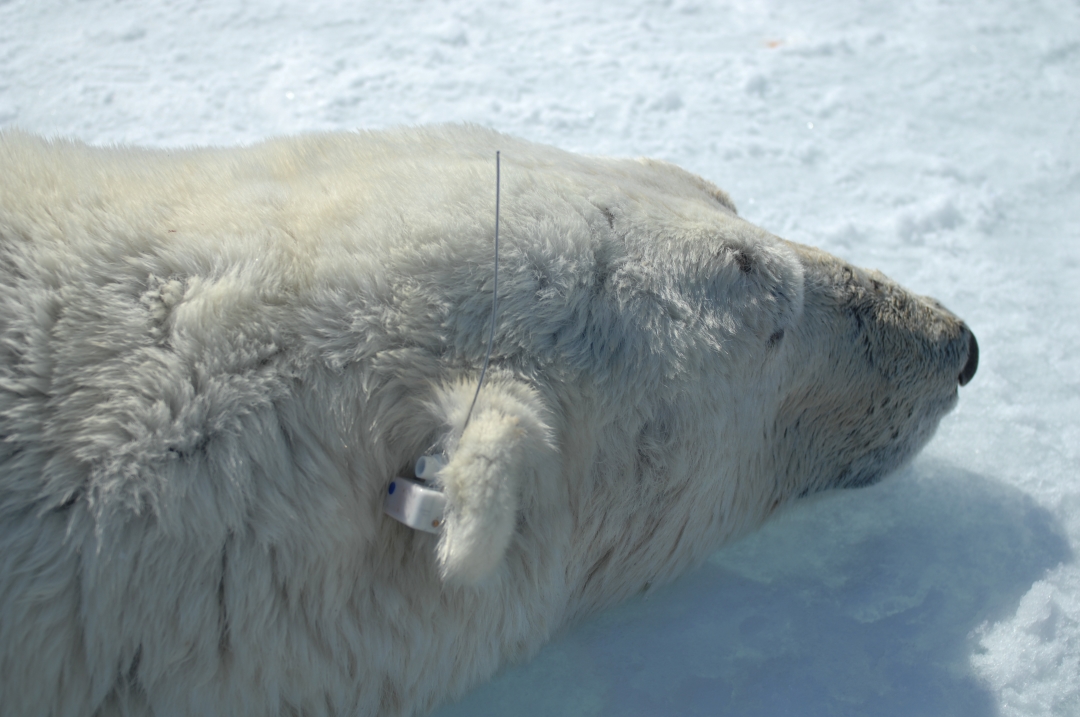← Back
On the track of the polar bears

Polar bears live in a challenging environment for human beings, and getting close to them is not without dangers. Wildlife tracking using Argos PTTs has thus enabled us to know more about them.
The polar bear (Ursus maritimus) is heavily dependent on sea ice, since they feed on seals (ringed seals and bearded seals) they catch when they surface to breath or haul out. Satellite telemetry using Argos has been the key to learn about the wanderings of the polar bears. The early methods required flying in an aircraft to track the bears, which was not only inefficient but also dangerous for those doing the tracking. With the advent of satellites, we can examine the characteristics of the habitats that the bears use, how far they move each day, how often they swim and how far, and critically in a rapidly changing Arctic, how the bears are responding to sea ice loss.
The core of the research and monitoring program at the University of Alberta has used satellite telemetry on polar bears for decades using Argos PTT collars deployed on adult female. By tracking adult females, we know those with young cubs fresh from the den use different areas than those with older cubs. Furthermore, females in mating condition use different areas yet again. The main benefit of the collars is that they can provide up to six locations per day for one or two years. In recent years, ear tags have also been used to expand our insights on adult male and subadult populations, which have a different behaviour than adult females. The ear tags with tiny batteries only transmit for a few months, but since collars do not fit on male polar bears, and can’t be used on growing individuals, using both approaches yield insights into the world of the bears.
As the Arctic changes, one of the key monitoring parameters is the duration of the on-ice period. A pregnant female can fast for up to 8 months and give birth to a pair of cubs and nurse them up to about 10 kg each before returning to the sea ice to feed again but an earlier break-up can reduce cub survival. Such a fast isn’t possible for subadults that are rapidly growing, less experienced at hunting, and thus have less stored fat. In addition, adult males focus on mating in the spring, and looking for love happens at the expense of eating. The net result is that subadults and adult males can fast for shorter periods than females. How long they can go is a focus of our field research: the satellite data are used to tell when the bears arrive on land as the ice breaks up, and when they leave again to resume their life on sea ice.
The data collected on the bears also helps wildlife managers make decisions. All analyses suggest that we’ll lose many populations as the sea ice disappears for too long in a given year and the bears are no longer able to balance their feasting and fasting. However, we also expect the bears to persist to the end of the century in the High Arctic of Canada and Greenland. It’s a challenging time ahead for polar bears, but knowing them better should help.
Photo featured: Collared female with two cubs. (Credits A. Derocher)
References
Dag Vongraven, Andrew E. Derocher and Alyssa M. Bohart, 2018: Polar bear research: has science helped management and conservation?, Environmental Reviews, DOI: 10.1139/er-2018-0021
Polar Bear Science http://polarbears.biology.ualberta.ca/
Andrew Derocher on twitter https://twitter.com/AEDerocher

